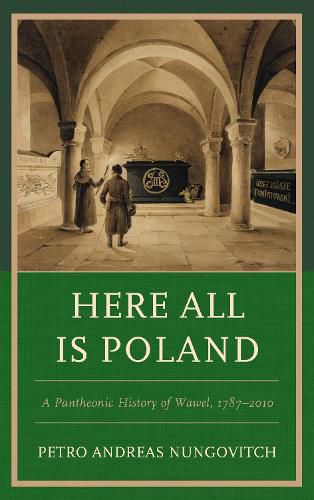Readings Newsletter
Become a Readings Member to make your shopping experience even easier.
Sign in or sign up for free!
You’re not far away from qualifying for FREE standard shipping within Australia
You’ve qualified for FREE standard shipping within Australia
The cart is loading…






On 10 April 2010, Polish President Lech Kaczynski and First Lady Maria Kaczynska were killed in an airplane crash outside the city of Smolensk in western Russia, where they were flying to commemorate the 70th anniversary of the Soviet massacre of over twenty-one thousand Polish prisoners during the Second World War. Eight days later, the president and his wife were laid to rest beneath the Krakow Cathedral on Wawel Hill, an ancient necropolis of Polish kings and queens and the most prestigious burial site in all of Poland, where only six other meritorious, non-royal national figures have been enshrined since the demise of the Polish monarchy in the late eighteenth century.
The decision to bury Lech and Maria Kaczynski in Poland’s highest national pantheon sparked an emotional debate about its symbolic appropriateness and underscored the question of how such burial decisions are actually made. It also raised a whole host of questions about the historical significance and pantheonic function of Wawel-the bedrock of sacred memory for the Polish nation, as Stanislaw Staszic put it in the early nineteenth century-in modern Polish consciousness. Until now, these questions have received surprisingly little attention beyond Polish historians of Krakow. Here All Is Poland excavates and builds upon the extant scholarly discourse of Wawel to plot the evolution of a pantheonic funeral tradition over two hundred years, thus providing a context and a clue for interpreting the historical significance of the 2010 burial.
$9.00 standard shipping within Australia
FREE standard shipping within Australia for orders over $100.00
Express & International shipping calculated at checkout
On 10 April 2010, Polish President Lech Kaczynski and First Lady Maria Kaczynska were killed in an airplane crash outside the city of Smolensk in western Russia, where they were flying to commemorate the 70th anniversary of the Soviet massacre of over twenty-one thousand Polish prisoners during the Second World War. Eight days later, the president and his wife were laid to rest beneath the Krakow Cathedral on Wawel Hill, an ancient necropolis of Polish kings and queens and the most prestigious burial site in all of Poland, where only six other meritorious, non-royal national figures have been enshrined since the demise of the Polish monarchy in the late eighteenth century.
The decision to bury Lech and Maria Kaczynski in Poland’s highest national pantheon sparked an emotional debate about its symbolic appropriateness and underscored the question of how such burial decisions are actually made. It also raised a whole host of questions about the historical significance and pantheonic function of Wawel-the bedrock of sacred memory for the Polish nation, as Stanislaw Staszic put it in the early nineteenth century-in modern Polish consciousness. Until now, these questions have received surprisingly little attention beyond Polish historians of Krakow. Here All Is Poland excavates and builds upon the extant scholarly discourse of Wawel to plot the evolution of a pantheonic funeral tradition over two hundred years, thus providing a context and a clue for interpreting the historical significance of the 2010 burial.